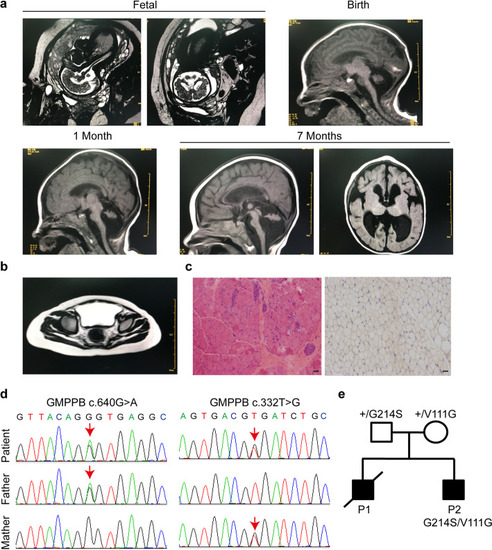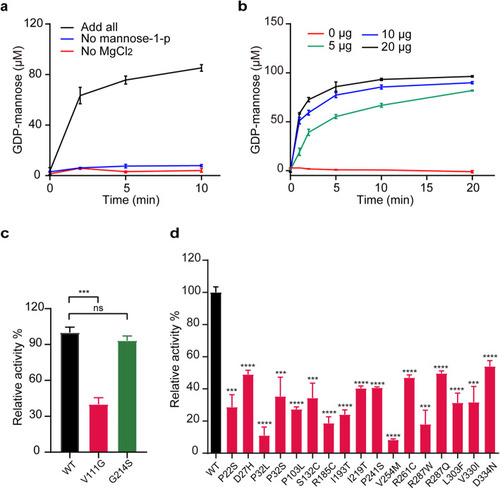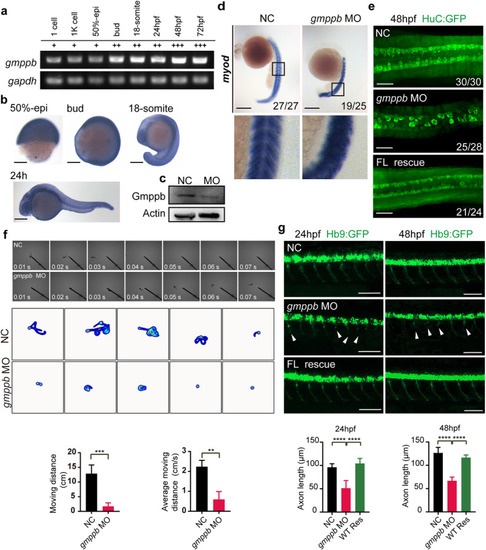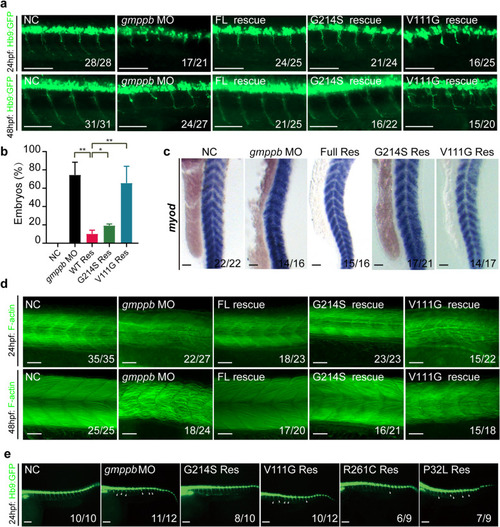- Title
-
GMPPB-congenital disorders of glycosylation associate with decreased enzymatic activity of GMPPB
- Authors
- Liu, Z., Wang, Y., Yang, F., Yang, Q., Mo, X., Burstein, E., Jia, D., Cai, X.T., Tu, Y.
- Source
- Full text @ Mol Biomed
|
Clinical and genetic characterization. |
|
GMPPB mutants exhibit significantly decreased enzymatic activity. |
|
Gmppb knockdown(KD) in Zebrafish causes abnormal development of muscle and motor neurons, movement disability. EXPRESSION / LABELING:
|
|
GMPPB activity is required for muscle and neuronal development ( |




